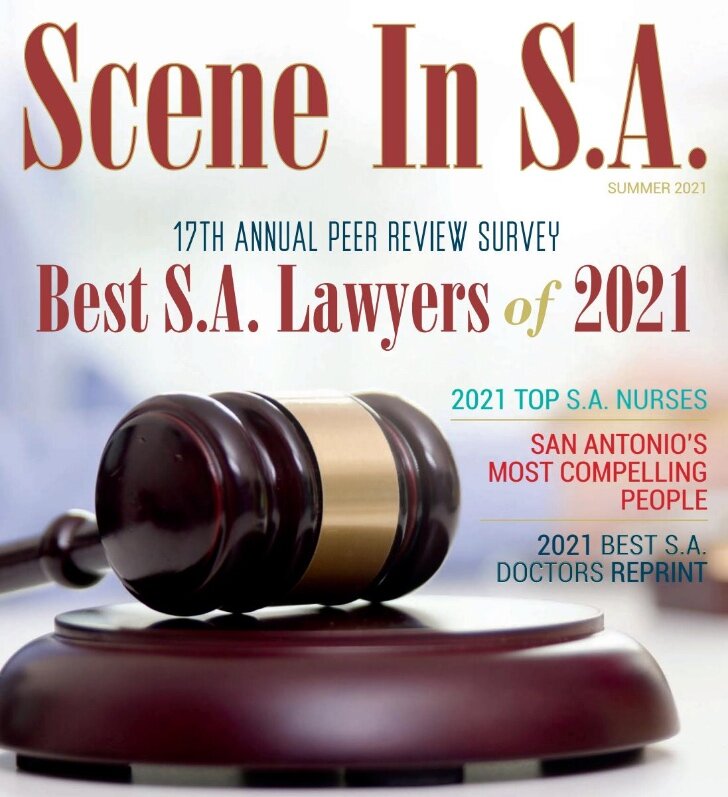A new report from LeanIn.org and McKinsey indicates that it’s not the “glass ceiling” that is the primary block to women’s progress in the workplace….
Read MoreSelect A Category
- Age Discrimination
- Arbitration
- COVID-19
- Disability Discrimination
- Employment Contracts
- FMLA
- HR Basics
- LGBTQ+
- Legislation
- Non-Compete Agreements
- Overtime Claims
- Pregnancy Discrimination
- Race Discrimination
- Religious Discrimination
- Retaliation
- Sex Assault
- Sex Discrimination
- Sex Harassment
- Unions
- Verdicts and Settlements
- Video
- Whistleblowers
- Workplace Injuries
- Wrongful Discharge
Jury Whacks Walmart with $5.2 Million Verdict In Favor of Disabled Worker
/A federal jury in Wisconsin awarded a disabled Walmart Inc. employee $5.2 million in damages, finding that the retail chain had violated the Americans with Disabilities Act when it refused to accommodate the long-time worker.
The employee, who has a developmental disability and is deaf and visually impaired had worked as a cart pusher at the store for 16 years before a new manager started at the store. The new store manager suspended the employee in his first month and forced him to resubmit medical paperwork to keep his reasonable accommodations, according to the lawsuit. The store then fired the employee.
Last week a Wisconsin jury found in the employee’s favor after a 3½-day trial and awarded him $200,000 in compensatory damages and an additional $5 million in punitive damages. Sadly, this amount will likely be reduced by operation of the statutory damages caps found in the ADA. These caps have not been adjusted for inflation in almost 30 years.
Does the ADA Require Business Websites to be Accessible? →
/In January the Ninth Circuit Court of Appeals issued a decision allowing a blind plaintiff to proceed with his ADA Title III lawsuit against Domino’s Pizza for having an allegedly inaccessible website and mobile app. The court determined that allowing the claim to move forward was not a violation of Domino’s due process rights, even though the ADA and its regulations contain no definition of, or technical specifications for, “accessible” public accommodations websites. It now appears that Domino’s is planning to try to take the issue to the U.S. Supreme Court….
Read MoreState of Michigan Hammered with a $11 Million Dollar Verdict in Race and Retaliation Case
/Genesee County Courthouse
A Michigan jury awarded more than $11 million this month to a husband-and-wife pair who sued the Michigan Department of Corrections, alleging claims of race discrimination, hostile work environment and retaliation.
A six-member all-white jury delivered its unanimous verdict after a six-week trial that included 41 witnesses and hinged on allegations of racial discrimination and retaliation. The plaintiff alleged that she was racially harassed on a daily basis including being called 'Mammy', (being) asked if she wanted chitlins on her pizza, called the "black one" in her all-white office, and told she was not wanted in the all-white office. She also claimed she was put into life-threatening situations after complaining about racism.
The plaintiff had worked for the state for 19 years. Because of the work environment, the plaintiff transferred to another office, but she said the race discrimination and retaliation continued. Her husband also was allegedly forced to retire from his job as a deputy warden when phony disciplinary charges were brought against him. The jury awarded the plaintiff $5.1 million and her husband $6.25 million.
Read More: Detroit News
Learn More About Racial Discrimination and Retaliation
UPS Will Pay $2.25 Million to Settle EEOC Pregnancy Discrimination Claim
/United Parcel Service, Inc. (“UPS”), the world's largest package delivery company, will pay $2.25 million and clarify its pregnancy accommodation policies to resolve a pregnancy discrimination charge that was investigated by the U.S. Equal Employment Opportunity Commission (EEOC), the federal agency announced last week. The settlement stems from a claim brought by a UPS driver who alleged that the company's refusal to provide light duty as an accommodation to pregnant workers violated the Pregnancy Discrimination Act (PDA). The EEOC's investigation uncovered other incidents beyond the initial Charging Party where pregnant women were not given light duty or provided other accommodations, according to a statement from the EEOC.
The Commission said that, until 2015, UPS provided accommodations to workers injured on the job, those with driving restrictions and those with disabilities. However, the package delivery service did not provide accommodations to pregnant women.
Discrimination based on pregnancy, childbirth or related medical conditions, is a prohibited form of sex discrimination. While the Pregnancy Discrimination Act doesn't require accommodations per se, it does require that employers treat women affected by pregnancy or related medical conditions the same as non-pregnant applicants or employees who are similar in their ability or inability to work. Thus, if a company provides accommodations for health conditions other than pregnancy, it must provide equal treatment of pregnancy and health conditions related to pregnancy.
This means that pregnant workers must be provided with the same access to light duty that other employees receive. It also means that pregnant women cannot be excluded from light duty or denied it at a higher rate than other employees.
Read the EEOC’s Press Release Here.
Learn More: Pregnancy Discrimination Info
Another Age Discrimination Lawsuit Filed Against Google: "Go tell Grandpa to pick up the pace."→
/A 72-year-old former Google employee has sued the company, claiming he experienced numerous instances of age-based harassment, discrimination and intimidation according to filed court documents.
Read MoreMomentum Builds For Ending Forced Arbitration: House Votes The FAIR Act Out Of Committee
/Taking a monumental step forward for workers, on Tuesday, September 10, the House Judiciary Committee marked up and approved (22-14) the Forced Arbitration Injustice Repeal Act (FAIR Act) (H.R. 1423). The House is expected to vote on the bill as soon as this week. Congress has never before voted on a comprehensive bill to end forced arbitration.
The FAIR Act would open the courthouse doors and restore workers' access to America's civil justice system. Among other things, the FAIR Act would make it unlawful for employers to impose arbitration on workers, unless the worker knowingly and voluntarily agrees to arbitration after a dispute arises or pursuant to a collective bargaining agreement. The FAIR Act bans arbitration in consumer, civil rights, employment, and antitrust disputes. The bill addresses many issues that are important in ensuring that workers are not bound by forced arbitration clauses.
Employer Pays $200,000 to Settle Anti-Pregnancy Policy Case
/A Tennessee caregiving company has agreed to pay $200,000 to settle a pregnancy bias lawsuit brought by the U.S. Equal Employment Opportunity Commission.
According to the EEOC's lawsuit, since at least 2010, the employer had required its female employees to sign a pregnancy policy during orientation. The policy provided that their employment terminated at the fifth month of pregnancy. The EEOC further alleged that the employer enforced its policy against multiple women by terminating them due to their pregnancy, despite their ability to effectively perform their job duties.
The Pregnancy Discrimination Act makes clear that bias against applicants or employees on the basis of childbirth, pregnancy, or related medical conditions constitutes illegal sex discrimination. Additionally, while pregnancy itself is not considered a disability under the Americans with Disabilities Act (ADA), conditions associated with pregnancy — including back pain, gestational diabetes, and pregnancy-induced high blood pressure — may be.
Pregnant employees who are able to continue performing their jobs must be permitted to do so. If a pregnant employee is temporarily unable to perform her job, she must be treated the same as any other temporarily disabled employee in terms of opportunities for modified work tasks, light duty, alternative assignments, disability leave or unpaid leave.
Learn more about pregnancy bias and pregnancy discrimination laws.
What is Labor Day?
/As we enjoy another Labor Day weekend, here are some quick facts about the holiday designed to celebrate workers.
How Labor Day Came About
"Labor Day differs in every essential from the other holidays of the year in any country," said Samuel Gompers, founder and longtime president of the American Federation of Labor. "All other holidays are in a more or less degree connected with conflicts and battles of man's prowess over man, of strife and discord for greed and power, of glories achieved by one nation over another. Labor Day...is devoted to no man, living or dead, to no sect, race, or nation."
Labor Day, the first Monday in September, is a creation of the labor movement and is dedicated to the social and economic achievements of American workers. It constitutes a yearly national tribute to the contributions workers have made to the strength, prosperity and well-being of our country.
Founder of Labor Day
More than 100 years after the first Labor Day observance, there is still some doubt as to who first proposed the holiday for workers.
Some records show that Peter J. McGuire, general secretary of the Brotherhood of Carpenters and Joiners and a co-founder of the American Federation of Labor, was first in suggesting a day to honor those "who from rude nature have delved and carved all the grandeur we behold."
But Peter McGuire's place in Labor Day history has not gone unchallenged. Many believe that Matthew Maguire, a machinist, not Peter McGuire, founded the holiday. Recent research seems to support the contention that Matthew Maguire, later the secretary of Local 344 of the International Association of Machinists in Paterson, N.J., proposed the holiday in 1882 while serving as secretary of the Central Labor Union in New York. What is clear is that the Central Labor Union adopted a Labor Day proposal and appointed a committee to plan a demonstration and picnic.
The First Labor Day
The first Labor Day holiday was celebrated on Tuesday, September 5, 1882, in New York City, in accordance with the plans of the Central Labor Union. The Central Labor Union held its second Labor Day holiday just a year later, on September 5, l883.
In l884 the first Monday in September was selected as the holiday, as originally proposed, and the Central Labor Union urged similar organizations in other cities to follow the example of New York and celebrate a "workingmen's holiday" on that date. The idea spread with the growth of labor organizations, and in l885 Labor Day was celebrated in many industrial centers of the country.
Labor Day Legislation
Through the years the nation gave increasing emphasis to Labor Day. The first governmental recognition came through municipal ordinances passed during 1885 and 1886. From them developed the movement to secure state legislation. The first state bill was introduced into the New York legislature, but the first to become law was passed by Oregon on February 2l, l887. During the year four more states -- Colorado, Massachusetts, New Jersey, and New York -- created the Labor Day holiday by legislative enactment. By the end of the decade Connecticut, Nebraska, and Pennsylvania had followed suit. By 1894, 23 other states had adopted the holiday in honor of workers, and on June 28 of that year, Congress passed an act making the first Monday in September of each year a legal holiday in the District of Columbia and the territories.
Have a great Labor Day weekend everybody!
Is Obesity a Protected Disability?
/The Washington State Supreme Court Says It Is
Last month, the Washington State Supreme Court ruled that it is illegal under state law to refuse to hire an obese individual if they are otherwise qualified for a job when it defined obesity as a disability under state law.
The court ruled that the state's definition of disability in the Washington State Law Against Discrimination included individuals with obesity, offering a significantly broader scope than federal disability law. Weight is not listed as a protected category under Title VII of the federal Civil Rights Act and federal courts have not considered obesity a disability under the Americans with Disabilities Act (ADA) unless it is the result of an underlying physiological disorder or condition.
U.S. federal appeals courts have ruled that obesity in itself is not an impairment under the ADA. Four federal appeals courts, including most recently the 7th Circuit in June, have said that under the Act, there must be an underlying or perceived impairment — a "physiological disorder or condition" — causing a person's obesity for the individual to be considered disabled.
The Washington State Court decision confronted the established classification of obesity, instead preferencing the state's broader disability law. It ruled that under the state law, "the medical evidence [for obesity] shows that it is a 'physiological disorder, or condition' that affects many of the listed body systems" and that "obesity is not merely the status of being overweight, but instead is recognized by the medical community as a 'primary disease.'"
EEOC Sues Greyhound Lines, Inc. For Religious Discrimination
/According to a lawsuit filed earlier this month by the EEOC against Dallas-based Greyhound Lines, the company violated federal law when it refused to accommodate the religious beliefs of a bus driver.
According to the EEOC's lawsuit, a driver who is a practicing Muslim applied for a driver position at Greyhound's Baltimore facility. During the interview the driver told the supervisor for driver operations and safety that her religious beliefs require her to dress modestly by wearing a headscarf and an abaya, a loose-fitting ankle-length overgarment that conceals the outline of the wearer's body. The supervisor told her during the interview, and later during her training after she was hired, that Greyhound would accommodate her religious beliefs.
However, Greyhound later refused to allow her to wear the abaya, claiming it would be a safety hazard, and proposed she wear a knee-length skirt over pants. The EEOC said that the driver was compelled to quit because the skirt-and-pants uniform proposal conflicted with her religious practice of modest dress by revealing the outline of her body.
According to the suit, prior to applying at Greyhound, the driver had successfully completed her commercial driving license training and had satisfactorily completed all Maryland Motor Vehicle Administration examinations while wearing the abaya. She also was employed for one year as a tractor-trailer driver while wearing the abaya.
Title VII of the Civil Rights Act of 1964 prohibits discrimination based on religion and requires employers to reasonably accommodate an applicant's or employee's sincerely held religious beliefs unless it would pose an undue hardship. The EEOC filed its lawsuit in U.S. District Court for the District of Maryland, Baltimore Division (EEOC v. Greyhound Lines, Inc., Civil Action No. 1:19-cv-01651). The lawsuit seeks back pay, reinstatement, compensatory damages and punitive damages, as well as injunctive relief.
"The driver was able to perform her duties safely while wearing her religious garb, but Greyhound unjustly refused to accommodate her religious beliefs," said EEOC Regional Attorney Debra M. Lawrence. "No employee should be forced to choose between practicing her sincerely held religious beliefs and earning a living."
Read more articles about discrimination here.
$334,500 Age Discrimination Verdict Against Time Warner Cable Upheld on Appeal
/ADEA - Age Discrimination in Employment Act
The 4th U.S. Circuit Court of Appeals has let stand a $334,500 jury verdict for a 61-year-old employee who the company fired over a single incident of backdating a form.
The Plaintiff, Glenda Westmoreland, had worked for a Time Warner Cable subsidiary for more than 30 years, was fired after instructing a subordinate to backdate a form to reflect the date of a related meeting, rather than the date the form was actually completed. TWC initially told her the infraction wasn't serious but later concluded that she had violated company policy prohibiting false statements and created "trust and integrity" issues. While walking her to her car, a supervisor told the Plaintiff, "You’ll get another job. Just go home and take care of those grandbabies.” Westmoreland sued, alleging age discrimination.
A jury found for Westmoreland and, on appeal, the 4th Circuit upheld the verdict. TWC’s "about face" on the disciplinary matter could give rise to a "suspicion of mendacity" about the company’s rationale for firing her, the court said. It also noted that company representatives had testified that there were lesser forms of discipline available. As a result, the court said, the jury could reasonably find that Westmoreland’s firing for one infraction that did not require termination was "such an extreme overreaction as to be pretextual." In addition, the jury could have found that the "grandbabies" comment was made by a supervisor who harbored age bias, the court said.
Age discrimination in employment is illegal, but two-thirds of older job seekers report encountering it. Employees between the ages of 46 and 65 (especially those nearing retirement age) are the most likely to be targeted. Those employees are often let go by employers who perceive them to be more expensive and less valuable than younger replacements.
The Age Discrimination in Employment Act (ADEA) exists to protect individuals who are 40 years of age or older from employment discrimination based on age. The ADEA's protections apply to both employees and job applicants. Under the ADEA, it is unlawful to discriminate against a person because of his/her age with respect to any term, condition, or privilege of employment -- including, but not limited to, hiring, firing, promotion, layoff, compensation, benefits, job assignments, and training.
You can read the full 4th Circuit opinion here.
New Labor Rule Means Gig Economy Workers In Texas Can't Get Unemployment Benefits
/Last month, the state’s labor regulator approved a controversial new rule on gig economy workers – a rule opponents say will have negative implications for these workers going forward.
Approved on a 2-1 vote, the rule from the Texas Workforce Commission exempts app-based companies that hire contractors – like TaskRabbit or DoorDash – from paying state unemployment insurance taxes for those workers. The three-member commission gave initial approval for the rule in December.
Labor unions and workers advocates say the new rules were tailor-made by lobbyists from a firm called Handy. The agency has defended its rule-making process, saying it is well within its legislatively appointed rights to rule on employment matters and that, per state law, it allowed 30 days of public comment before initially adopting the rules. Opponents have said the rules could incentivize companies to abandon brick-and-mortar businesses to avoid paying those state unemployment taxes.
The risk is that the rule would likely reclassify many construction workers as independent contractors, leaving them without those protections for wage theft and discrimination on job-sites.
Read more: KUT Article
Jury awards $3.8M to woman; Employer argued her breastfeeding schedule was 'excessive'
/An Arizona jury has sided with a breastfeeding paramedic, awarding the nursing mother $3.8 million for her lawsuit alleging she wasn't provided a lactation space as required by federal law.
Carrie Ferrara Clark sued the City of Tucson Fire Department, alleging that it violated federal employment laws when it failed to provide her with an appropriate lactation room on a consistent basis and when it retaliated against her for complaining about the issue. Her lawsuit alleged that the fire department's scheduler said he didn't believe she deserved any special accommodations. The HR manager also recommended that she use fire chiefs' and captains' bedrooms for pumping as needed, but Clark explained that waking up her supervisors every 2 to 3 hours seemed unreasonable. HR then told her "your pumping seems excessive to me.” When she tried to explain that such a schedule was normal for a newborn, the HR manager replied "well, it seems to me that you're not fit for duty."
A jury found the employer liable for discrimination and retaliation, awarding her $3.8 million. It found, among other things, that the employer discriminated against her because she was breastfeeding and that it assigned her to fire stations that did not have a space that complied with federal requirements for expressing breast milk.
The Fair Labor Standards Act (“FLSA”) states that employers are required to provide “reasonable break time for an employee to express breast milk for her nursing child for 1 year after the child’s birth each time such employee has need to express the milk.” Employers are also required to provide “a place, other than a bathroom, that is shielded from view and free from intrusion from coworkers and the public, which may be used by an employee to express breast milk.”
Employers are not required under the FLSA to compensate nursing mothers for breaks taken for the purpose of expressing milk. However, where employers already provide compensated breaks, an employee who uses that break time to express milk must be compensated in the same way that other employees are compensated for break time.
Learn More:
By Some Measures, the Gender Wage Gap Is Actually Getting Worse
/SOURCE: ALPHA STOCK IMAGES - HTTP://ALPHASTOCKIMAGES.COM/ CREATIVE COMMONS
Most experts agree that wage disparity is not improving for women — and, according to the Economic Policy Institute, it may only get worse going into 2019. Women may be paid up to 45% less than men for the same job in certain fields, a Hired report showed, and women's actual earnings may only be 49% of men's earnings once measured by total earnings "across the most recent 15 years for all workers who worked in at least one year," a Georgetown study noted. At the current rate, pay equity won't be reached for another 108 years, the World Economic Forum revealed in its gender gap index at the end of 2018.
A lack of access to jobs at the top of the company continues to drive the gender pay gap, according to research from PayScale. The new study, The State of the Gender Pay Gap in 2019, offers insight into where the system breaks down for women and people of color — and data suggests that an "opportunity gap" may be the primary reason wage parity does not yet exist.
Women face more barriers in the workplace that keep them in lower paid, lower level “individual contributor positions” as opposed to their male counterparts at the executive and management levels, the research noted. When women of color are factored into the equation, additional biases and barriers block their ability to reach parity.
Although modestly improved by 1% over the previous year, women still earn only 79 cents for every dollar earned by men. This data measures median salary without regard to job type, location, seniority, years of experience or industry. The controlled pay gap is only 98 cents to every dollar — but that stat does not paint the whole picture, PayScale said, as women of color consistently earn less than white men.
Employer Extending “Medical Leaves of Absence” Beyond 12 Weeks Creates an FMLA Trap for Unwary Employees
/An opinion letter issued last week by the U.S. Department of Labor (DOL) makes clear that neither employers nor employees can decline to designate Family Medical Leave Act (FMLA)-qualifying leave as such. DOL also made clear in its letter that while employers are free to adopt leaves policies more generous than the FMLA, they cannot extend the FMLA's protections beyond 12 weeks (or 26 weeks for military caregiver leave). The effect of these interpretations can create a trap for the unwary employee.
When an employer determines an employee needs leave because of an FMLA-qualifying reason, that leave must count toward his or her FMLA allotment, even if the employee requests otherwise. This means that employees cannot, for example, opt to take employer-provided sick or vacation time first; FMLA leave would have to run concurrently. And even if the employer chooses to grant more leave than the 12 weeks required by law, the employer cannot extend the law’s job protection to those additional weeks.
Here’s an example: An employee is out on FMLA leave due to a surgery or some other serious health condition. Near the end of the 12-week FMLA period, the employee’s doctor indicates that just a couple more weeks of leave would be beneficial medically. The employee asks his or her employer and the leave extension is granted. Then at the end of the leave period (now 14 weeks because of the extension) the employer says things have change and the employee had to be replaced or his/her job was eliminated. Does the employee have protection under the FMLA in this scenario? Probably not.
Over the last few years, we have seen many employers building in FMLA extensions into their medical leave policies. The policies often provide for 15 weeks of “Medical Leave” rather than the 12 weeks mandated by law. And, while more leave seems like a good thing, it can be a trap. This is because only the first 12 weeks of the 15-week medical leave period has job protection enforceable under the FMLA. If the employee stays out beyond 12 weeks, their job is no longer protected by federal law, even though the employer’s own policy granted 15 weeks of medical leave.
Are extended “Medical Leave” policies an example of companies being generous or are they carefully laid traps for unwary employees? A little of both perhaps. But the bottom line is that employees must remember that no matter what anyone at the company tells you, you only have FMLA job protection for the 12 weeks mandated by the statute.
Related: New Lawsuit Takes On Common FMLA Trap
Women “Treated Like a Piece of Meat” at the V.A.
/The New York Times had an enlightening, if disheartening, article this past week about the rampant sexual harassment that female veterans face when they attempt to obtain medical care at the V.A.
An entrenched, sexist culture at many veterans hospitals is driving away female veterans and lags far behind the gains women have made in the military in recent years, veterans and lawmakers of both parties say. Although the Department of Veterans Affairs has scrambled to adjust to the rising population of female veterans and has made progress — including hiring more women’s health care providers, fixing basic privacy problems in the exam rooms and expanding service to women in rural areas — sexual harassment at department facilities remains a major problem.
Women say it is galling that such a demeaning atmosphere persists, especially for the roughly 30 percent of female veterans who have reported being harassed or assaulted while serving in the military.
Flight Attendants File EEOC Charge Alleging American Airlines Discriminates Against Women
/AA Accused of Discrimination
The union that represents more than 27,000 American Airlines flight attendants has filed a charge with the U.S. Equal Employment Opportunity Commission (EEOC) alleging that the airline's attendance policy discriminates against women. The flight attendants charge that the attendance policy "fast tracks" flight attendants — a group that is 75% female — to potential discipline and discharge actions, while pilots — who are overwhelmingly male — are not subject to the policy.
This type of case is called a “disparate impact” case. Employment actions and policies can be problematic even if they do not intentionally discriminate against a protected group of workers. The law recognizes both "disparate treatment" discrimination (intentional acts of overt discrimination) and "disparate impact" discrimination (neutral policies and practices that have a disproportionate, adverse impact on a protected group and that cannot be justified by business necessity).
While disparate impact cases can come up with regard to any protected class (in this case, gender) they actually most often arise in the context of alleged age-based discrimination. Layoffs are often alleged to be based on age — a layoff targeting high-earning employees might have a disproportionate impact on long-tenured employees who happen to be older, for example. Similarly, recruiting efforts that focus on college campuses might unfairly exclude older workers.
IKEA Hit with Yet Another Age Discrimination Lawsuit
/IKEA Hit with 5 Age Discrimination Lawsuits
Alleging the company discriminates against its older employees and fosters a "corporate culture of age bias," IKEA is the target of a newly-filed class action lawsuit (Paine v. IKEA Holding US, Inc. et al., No. 19-cv-00723 (E.D. Pa. Feb. 21, 2019)). Since February 2018, at least five current and former employees have filed lawsuits against IKEA alleging age discrimination.
The lawsuits have all been filed in a period of just over a year. And they all argue that Ikea has fostered a workplace culture of discrimination, which systematically recruits and promotes young talent rather than workers over 40. The problem is alleged to have become even worse, once the company began an aggressive restructuring effort in 2017.
Whether protected-age job seekers can pursue lawsuits under the federal Age Discrimination in Employment Act without showing the alleged bias was intentional is a question on which federal courts are divided. The U.S. Supreme Court in 2017 declined to consider the issue in a case against R.J. Reynolds, leaving in place a holding by a federal appeals court in Atlanta that the ADEA doesn’t permit disparate impact or unintentional bias claims by job applicants. But a federal district court in California reached the opposite conclusion in a case against PricewaterhouseCoopers. Ultimately, this split in the circuits will have to be decided by the U.S. Supreme Court.
Age discrimination as a part of a large company restructuring can often be something that appears obvious while being simultaneously very difficult to prove. To make matters even more challenging, companies often offer severance packages to those being laid off, giving them only a few weeks to consult with an attorney and consider the issues.
If you find yourself the subject of a proposed layoff and you believe you may have been targeted due to your age (over 40) or if you have been given a severance agreement to review and consider, start looking for a qualified employment lawyer right away. Finding a qualified employment attorney who represents employees rather than companies may be more challenging than you think. In Texas, a good place to start is the Find-A-Lawyer page of the Texas Employment Lawyers Association. In other states, I would suggest you start with the National Employment Lawyers Association. Both groups feature lawyers who represent employees rather than employers and both have a lot of good information available for you to review and consider.
IHOP Franchises Agree to Pay $700K and to Create an HR Department to Settle Sex Harassment Suit
/IHOP Franchises Settle Sexual Harassment Suit
Several IHOP franchises have agreed to pay $700,000 after the U.S. Equal Employment Opportunity Commission (EEOC) sued them, alleging they failed to prevent or correct continual sexual harassment and retaliation against employees (U.S. Equal Employment Opportunity Commission v. Lucinda Management, LLC, et al., No. 2:17-cv-02458 (D. Nev. Feb. 19, 2019)). They will also have to create an HR department of professionals with experience handling and preventing discrimination, harassment and retaliation.
The franchises created a hostile work environment for employees after they ignored worker complaints about harassment, EEOC alleged in its complaint. Furthermore, the restaurants allegedly retaliated against some of the employees who spoke up about the problems, behavior which included reducing work hours, groundless discipline and termination. One restaurant, the complaint said, fired an employee after the worker reported seeing a cook "regularly touch female food servers' genitals and kiss them."
The restaurants also agreed to stop using a “72-hour sexual harassment policy”, which required employees to submit complaints of sexual harassment in writing within 72 hours. This had the obvious effect of preventing valid claims of harassment from being investigated and remedied.
As a part of the settlement agreement, the franchises will work with an EEO monitor who will, among other things, ensure any harassment-related policies, procedures and practices comply with Title VII and the consent decree's requirements.
























